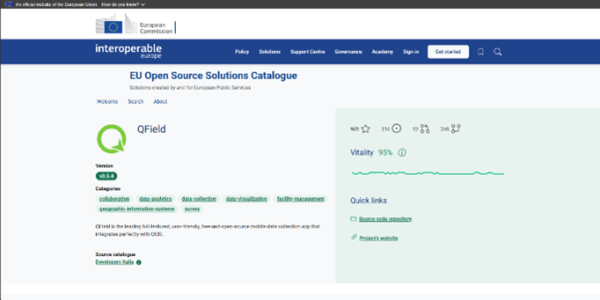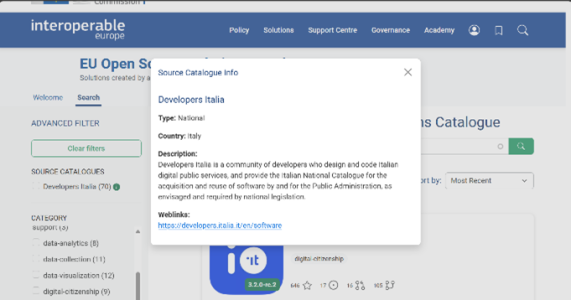The Interoperable Europe Portal is evolving with new features designed to enhance usability and improve your engagement. Whether you want better notification controls, improved event management, or enhanced moderation settings, these updates will help you navigate the Portal more efficiently.
What’s new?
-
Updated home page banner: The transition from Joinup is complete, and the Portal has a new, minimalistic but practical home page banner.
-
EU Open Source Solutions (OSS) Catalogue: A centralised hub featuring solutions created by and for European Public Services.
-
Assessment notifications: Receive notifications when interoperability assessments are published.
-
Improved solution subscriptions: Receive customised notifications when subscribing to solutions.
-
Moderated by default: All new collections and solutions require owner/facilitator approval before publishing content.
-
Events’ duration limit: Event items now have a duration limit of 14 days.
Let’s explore these updates in detail!
Updated home page banner: A new visual identity for the Portal
In the framework of the Interoperable Europe Act, the platform has transitioned from Joinup to the Interoperable Europe Portal. Our new home page banner has been updated to reflect this change.
What’s changed?
-
The previous banner, which emphasised the transition, has now been replaced with a cleaner, more minimalistic version.
-
The search bar remains in place, as well as the ability to navigate to the advanced search page for more precise queries.
With this change, the platform reaffirms its full transition to the Interoperable Europe Portal.
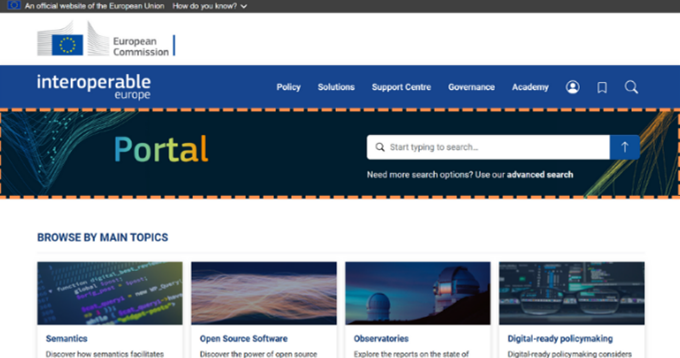
EU Open Source Solutions (OSS) Catalogue: Centralising public sector solutions
By leveraging the EU OSS Catalogue, public sector entities can access a wealth of shared knowledge and tools, driving efficiency and innovation in public service delivery.
Why this matters
This initiative aims to:
-
Promote the sharing and reuse of open source software among Member States.
-
Foster collaboration and reduce redundancy in software development.
-
Encourage the growth of an open-source ecosystem within the EU.
How it works
-
Integration with national repositories: The catalogue consolidates solutions from various national repositories, providing a comprehensive collection of tools and applications.
-
Standardised metadata: Each software entry is accompanied by standardised metadata, ensuring consistency and facilitating easy navigation.
-
Advanced search functionality: You can utilise advanced search features to filter and locate software solutions that meet specific criteria.
-
Vitality index: This feature assesses the health and activity level of open-source projects, providing insights into their sustainability and robustness.
-
Contribution by Public Administration: Organisations are encouraged to contribute their own open-source solutions to the catalogue, enhancing the repository's richness and supporting collaborative development.
Assessment notifications: Stay informed with personalised alerts
Why this update is important
-
Interoperability assessments are now mandatory, meaning all Member States must submit and publish these reports.
-
Staying updated on these publications is crucial for compliance and decision-making within the interoperability framework.
How it works:
-
When an interoperability assessment is published, subscribed users receive an instant notification.
-
You can manage this setting under "My Subscriptions", ensuring you receive updates only for the assessments you follow.
This functionality helps ensure timely awareness and compliance with the latest interoperability requirements.
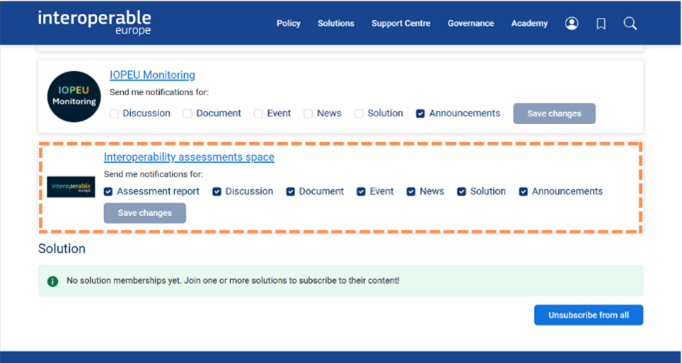

Improved solution subscriptions: Receive notifications tailored to your needs
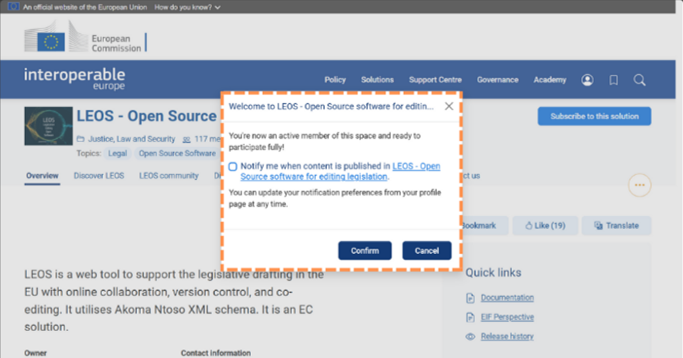

As with collections, you can now customise notifications for solutions, too.
What’s new?
-
When subscribing to a solution, a pop-up window will appear, allowing you to select your notification preferences before confirming your subscription.
-
You can choose to be notified about specific updates rather than receiving all solution-related notifications.
-
These preferences can be updated anytime under "My Subscriptions" in your profile settings.
Why this matters:
-
Gives you more control over your notification settings.
-
Reduces unnecessary alerts, ensuring you only receive information you truly care about.
-
Improves engagement by making it easier to follow solutions relevant to your work.
This enhancement provides a personalised experience, making the notification system more effective and user-friendly.
Moderated by default: Strengthening content control and quality in collections
To ensure content quality and prevent unauthorised publications, all new collections and solutions are now moderated by default.
How moderation works:
-
When you submit new content within a collection, the owner/facilitator of the collection must approve it before it becomes publicly visible.
-
The moderation setting is enabled by default, ensuring that all new content undergoes review and validation before publication.
-
Collection owners/facilitators can disable moderation if they prefer, allowing content to be published immediately.
Why this matters:
-
Enhances content credibility by preventing unverified or irrelevant submissions.
-
Protects against spam or misleading information, ensuring a higher standard of quality.
-
Gives collection owners/facilitators greater control over what appears in their space.
With this update, the Portal ensures a higher level of content management, creating a trusted and well-curated environment for you.


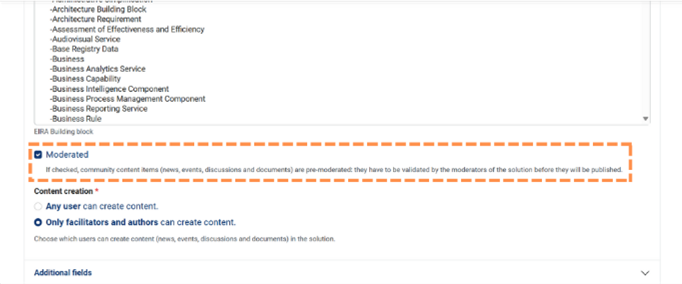
Events’ duration limit: Streamlining event management for content creators

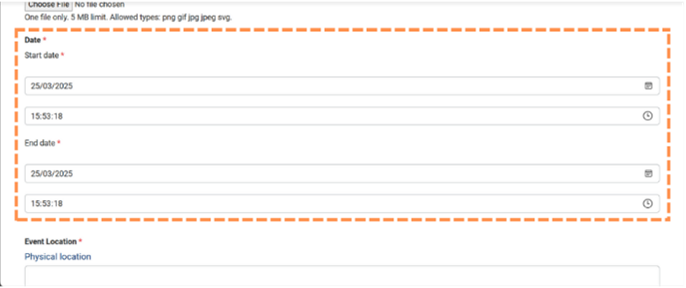
The event calendar has been improved, allowing content creators to set event durations with a maximum limit of two weeks (14 days).
What’s new?
-
Event creators now have control over setting event dates within the allowed timeframe.
-
If an event duration exceeds 14 days, the system will automatically block its publication until it is adjusted to meet the limit.
Why this matters:
-
Ensures that events remain relevant and timely, avoiding outdated or long-running events.
-
Helps participants and organisers plan better, as events will now fit within a more structured schedule.
-
Reduces clutter on the Portal by keeping the event calendar organised and up to date.
By implementing this change, the Portal provides a more structured approach to event management, benefiting both creators and event attendees.



